I was on my fourth cross country USA road trip, exploring some of my favorites again, camera in hand. The sky was perfectly clear, sunset was coming, and it was warm enough to stay out ’til the stars appeared. The Delicate Arch in Arches National Park, Utah is one of my favorite places on the planet. Not only is it a uniquely beautiful natural phenomenon, but there’s something ethereal about the whole area. At the end of a long hike upon an alien planet, you end up on top of everything, but not on a craggy mountain ridge as is often the case with long upward hikes. Instead you find yourself standing at the lip of a giant, smoothed bowl, like one of those huge penny funnels you used to see at kids museums, and about the right size for you to be the penny. The air is still and quiet, echoes bounce off the rock faces for miles in every direction, and if you sit and let the breeze blow across your face until a bit past sunset, you can often have this entire weird world to yourself.
On this night, I didn’t have it completely to myself. A group of about 5 other photographers was there, waiting for the stars the same as I. Often this situation can be a bit of an annoyance. There’s jostling for position, getting in each others’ way when one wants a wide shot and another wants to get close, and of course the constant silent comparisons of each others’ work to take you out of the moment. Luckily tonight was much different. This group of photographers were all friends, working as a team to ensure everybody got the shots they wanted. As we all waited for the time to pass between sunset and starlight, we talked and traded stories. This was to be an especially fortuitous night for me, a turning point in my night photography. Somehow in all the years of equipment additions and upgrades, one item had slipped my notice, and if not for this gregarious group of photogs I might still remain unaware of what has become one of my most essential tools, the simple LED light grid. 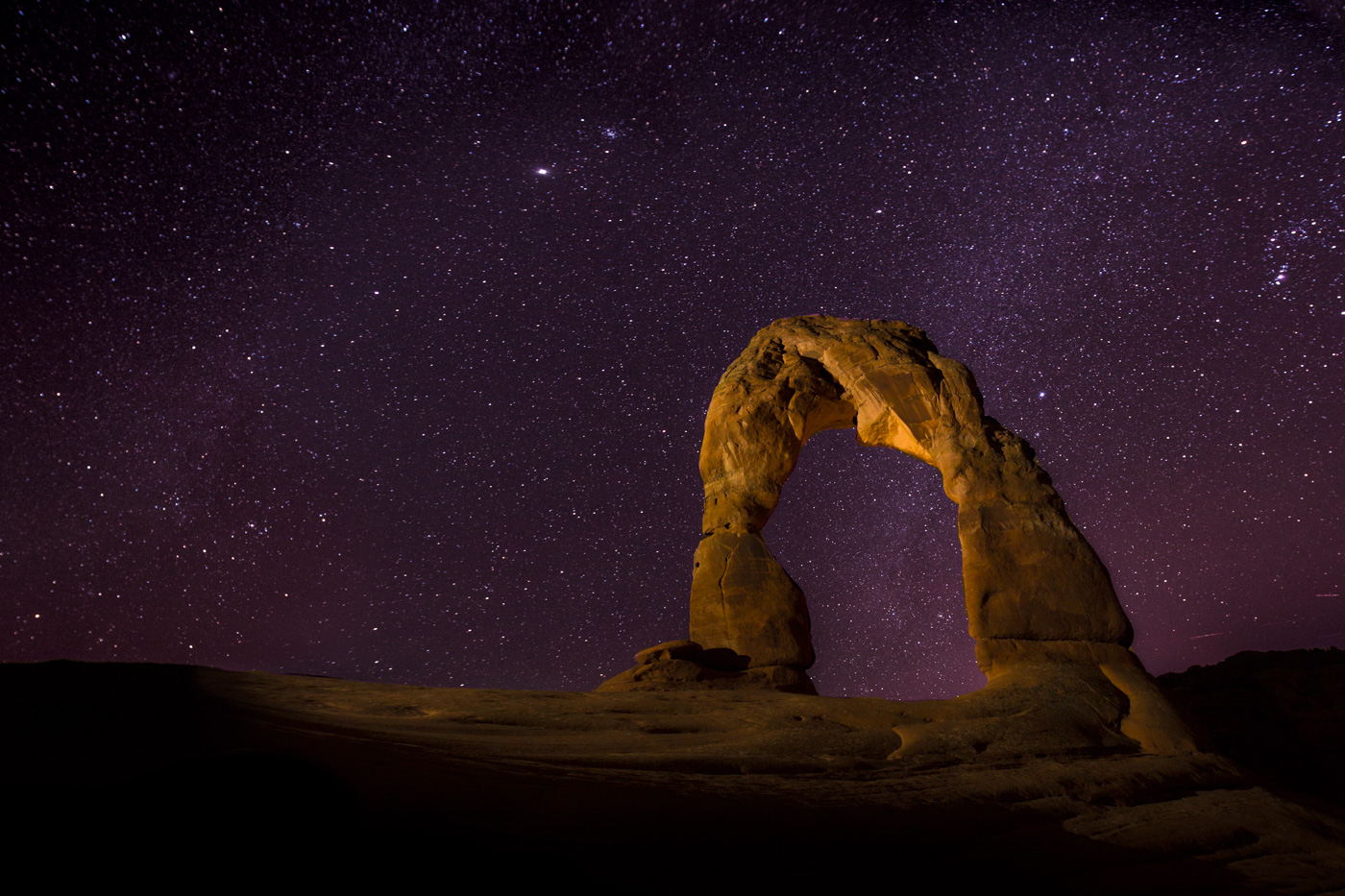
Advances in technology have done wonders for the world of photography, and especially for the solo travel photographer. The lack of need for film, canisters, light meters, and mirrors (I haven’t gone mirrorless, but it seems things are moving that direction quickly), have lightened our packs, relieved our backs, and made room for even more small but useful gadgets. We all know how LED technology has revolutionized everything from home lighting to televisions, small gadgets, and horticulture, so it’s no surprise that photography was affected too. LEDs can weight very little, get very bright, vary color temperature, generate nearly no heat, and all without the use of
much power. What would have previously required a big power pack, filters, full light stand and bulbs and now fits neatly into a pocket and turns the nighttime world into a studio. Bring 2 or 3 cheap LED grids and mini stands, and you’ve got hot lights powerful enough to illuminate beaches, buildings, or a delicate arch from a distance.
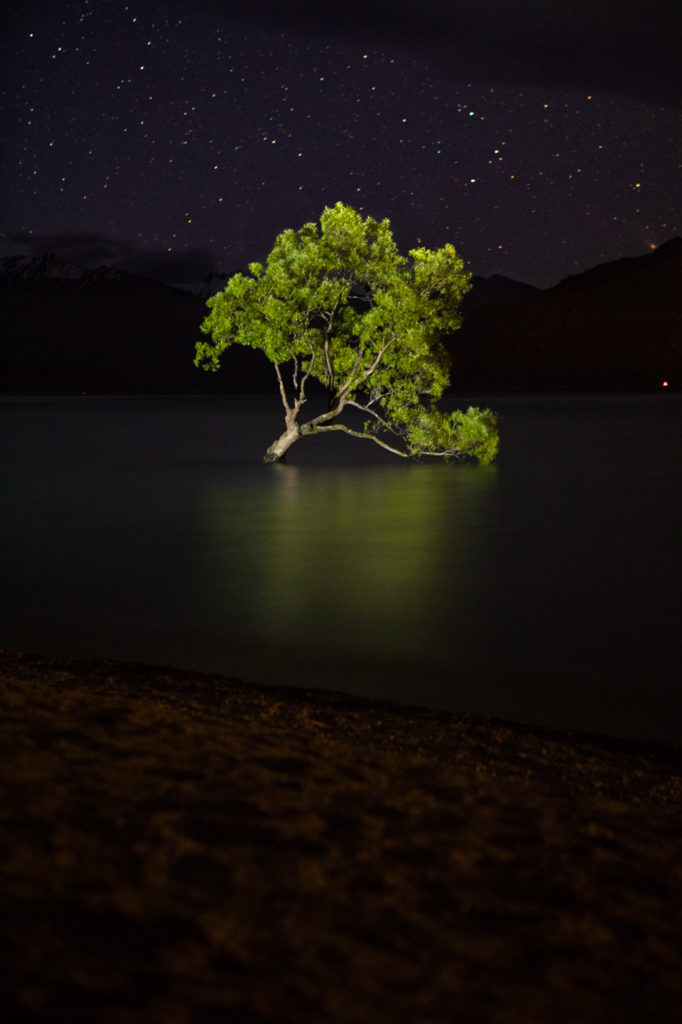 I ran out immediately (figuratively, really I went on Amazon), and bought myself two of exactly what they’d had that night, the F&V Z96, along with a miniature light stand for each, and I was in business. Now this is not a comparison review, and honestly I’m not sure the Z96 is the best grid out there at all. It has great features like a simple dimmer, included magnetic neutral and warm diffusers, a hotshoe connector, and the ability to take a high capacity external battery or just a handful of AAs, especially useful because I didn’t want to add new battery types or chargers to my overflowing kit. Furthermore, they were dirt cheap at less than $70 a piece, and as one of the cheapest pieces of equipment in my kit, they sure pack a lot of use.
I ran out immediately (figuratively, really I went on Amazon), and bought myself two of exactly what they’d had that night, the F&V Z96, along with a miniature light stand for each, and I was in business. Now this is not a comparison review, and honestly I’m not sure the Z96 is the best grid out there at all. It has great features like a simple dimmer, included magnetic neutral and warm diffusers, a hotshoe connector, and the ability to take a high capacity external battery or just a handful of AAs, especially useful because I didn’t want to add new battery types or chargers to my overflowing kit. Furthermore, they were dirt cheap at less than $70 a piece, and as one of the cheapest pieces of equipment in my kit, they sure pack a lot of use.
Unlike a strobe, LEDs give a continuous stream of light, so I can compose my image live instead of testing shots and adjusting. Also the batteries last for hours, even when I just go with AAs. That’s why they’re my new go-to for food, tabletop product, and outdoor night photography, especially timelapses (scroll to bottom for a look at one!).They’re small enough to fit in your hand, so you can even do some light painting if the mood for experimentation strikes you. So far, the only main drawback I’ve noticed with the Z96 is that the dimmer/power dial is easily moved, so if you leave the batteries in, it is likely to get switched on in your pack and drain out.
As the technology keeps getting better, I’m sure these grids will get even more powerful, and I’ll definitely continue to upgrade if that happens. But for now, I say the future is already here. So get your grid and light up your nights, or you know, maybe a cave.
Happy New Year!
Readysetgo!
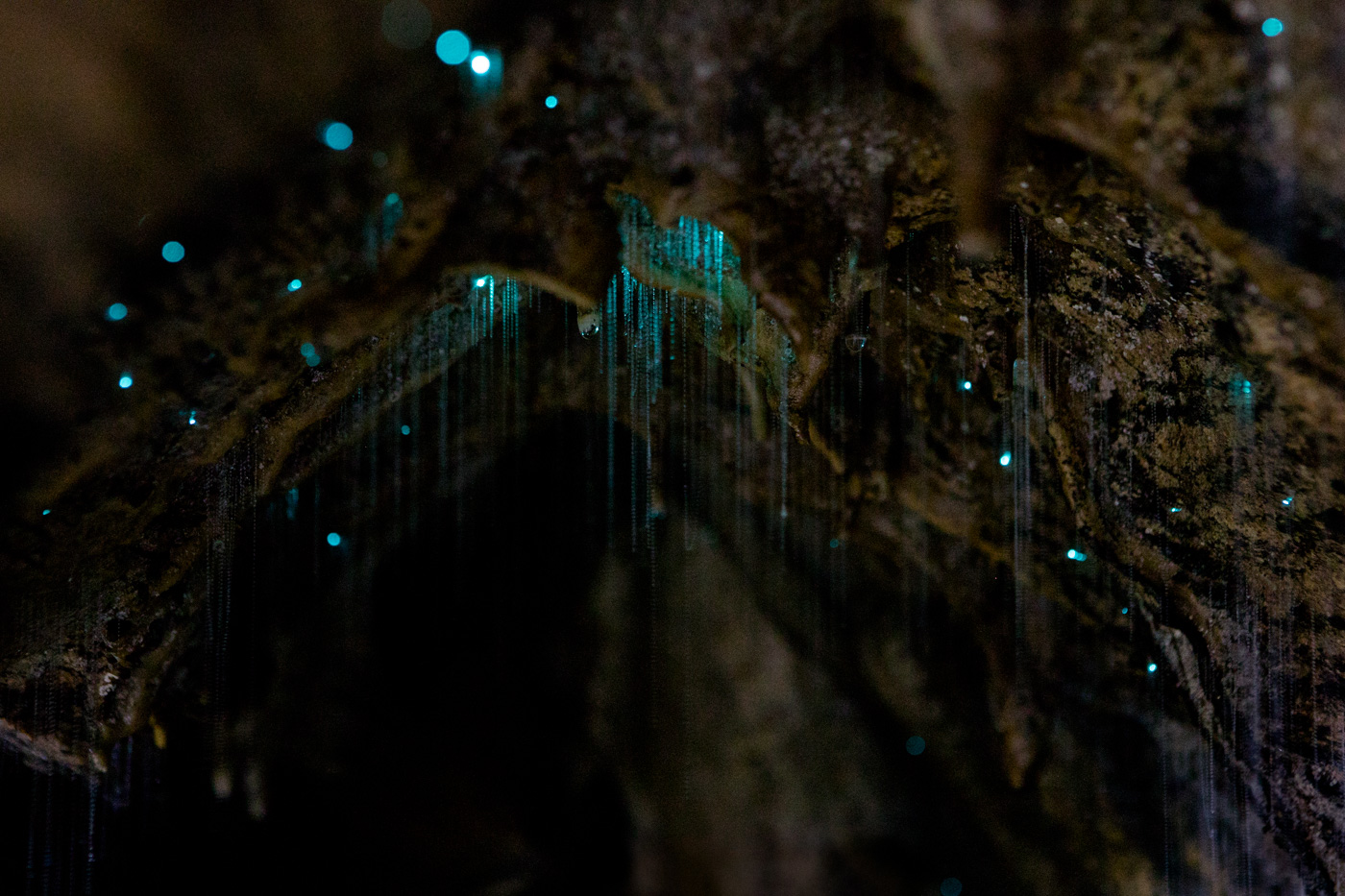
The famous glowworms of New Zealand. They’re really glow larvae, extending these sticky strings from the ceiling to catch their prey, then attracting them with their bioluminescence
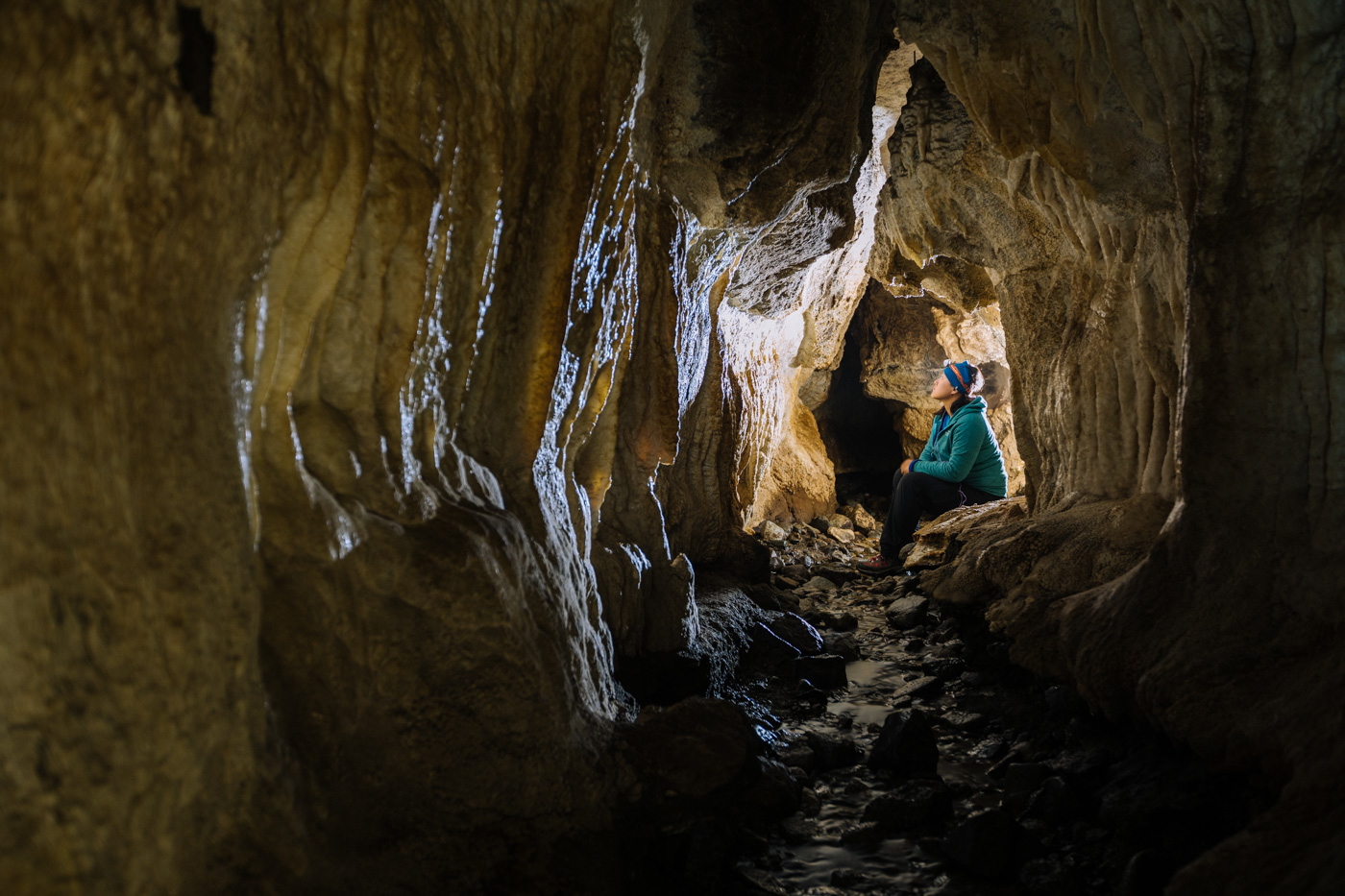
Spelunking with LEDs on Mount Luxmore
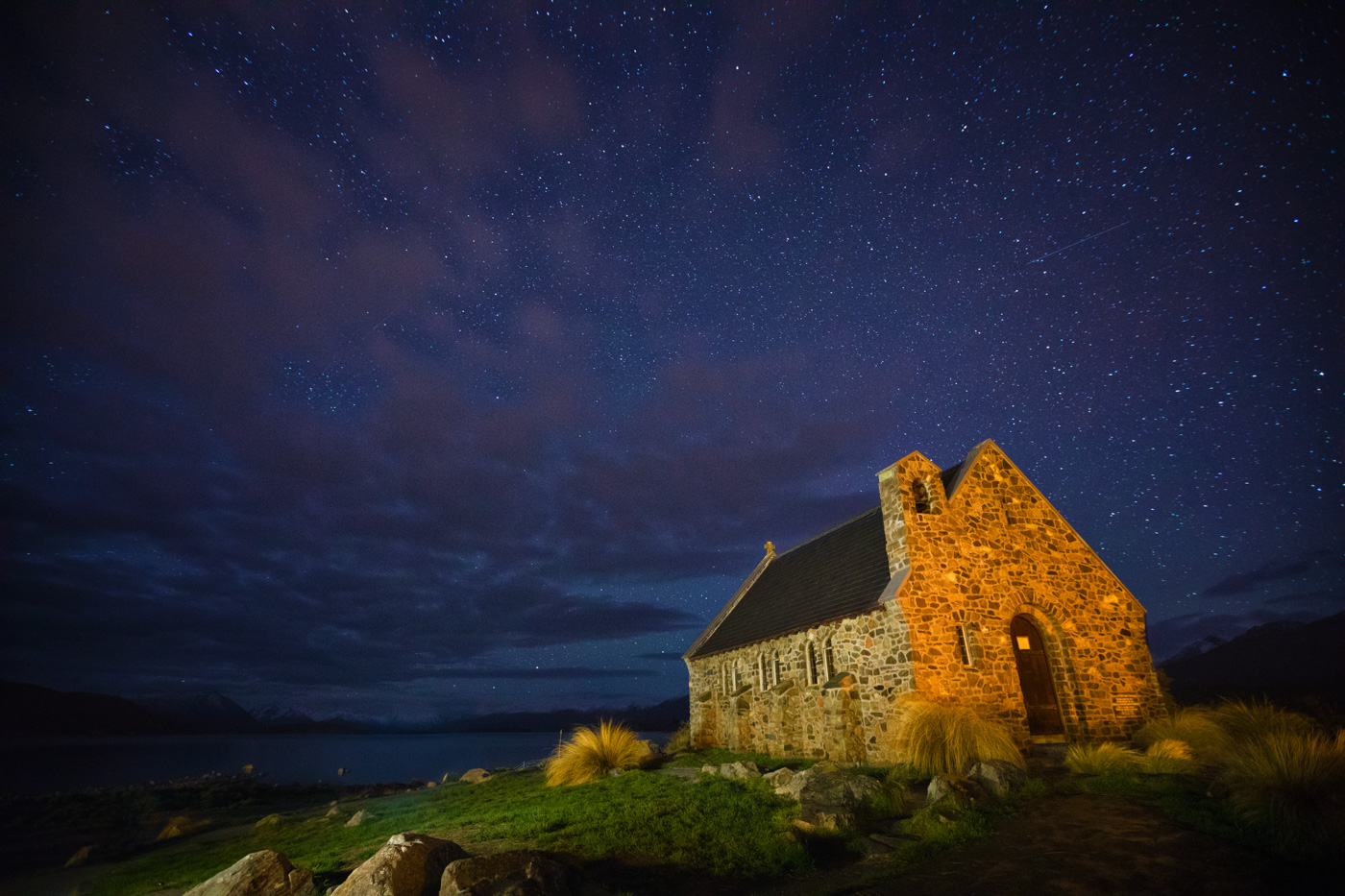
The Church of the Good Shepherd at Lake Tekapo was lousy with amateur photographers that night, but none had any lighting. They seemed thankful for my contribution
Comment
Nice Photo. I like your photography skills. Loved to read your blog.